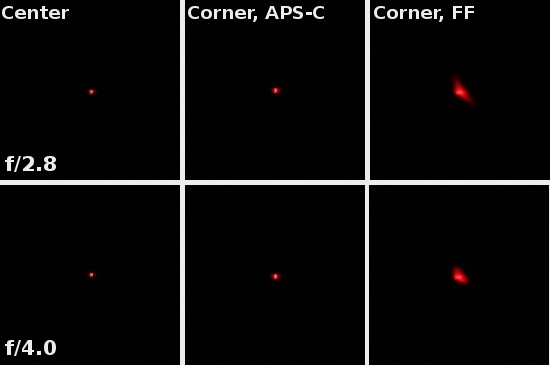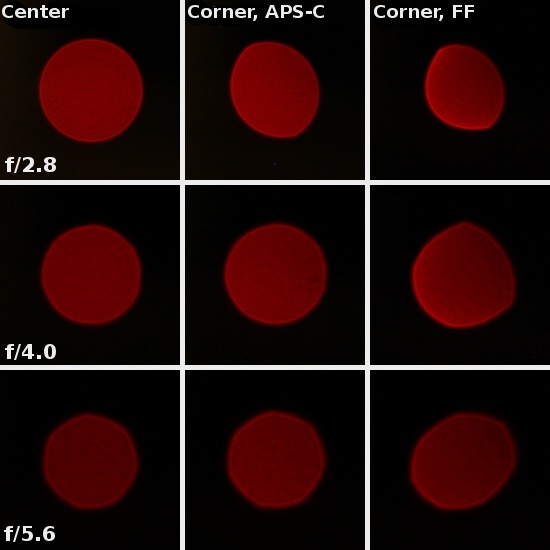Canon EF 24 mm f/2.8 IS USM
7. Coma, astigmatism and bokeh

The astigmatism correction looks much better. An average difference between horizontal and vertical MTF50 function values amounted to just 2.9% which is a very good result.
Please Support UsIf you enjoy our reviews and articles, and you want us to continue our work please, support our website by donating through PayPal. The funds are going to be used for paying our editorial team, renting servers, and equipping our testing studio; only that way we will be able to continue providing you interesting content for free. |
- - - - - - - - - - - - - - - - - - - - - - - - - - - - - - - - - - - - - - - - - - - - - - - -
One glance at the defocused images of a diode and you can notice a huge difference between the APS-C sensor and full frame. On the smaller detector the diode image in the frame corner looks the same as in the centre already by f/4.0. Apart from that the light in circles is very evenly spread. In the case of full frame corners the image is significantly distorted and you see a distinct lightness gradation so the blur in the frame corners can be sometimes less pleasant to the eye. When moving closer to the APS-C sensor corners the situation should improve, though.







